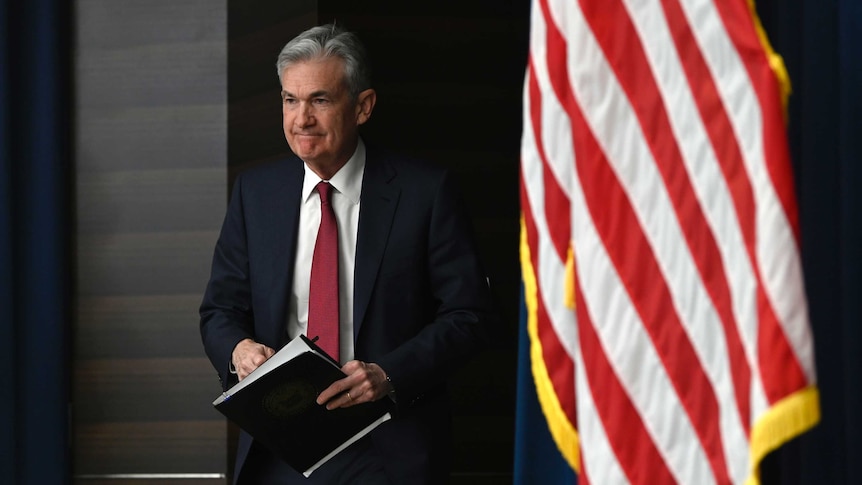US consumer inflation has eased thanks to a sharp fall in the cost of oil, sending US stocks higher.
Key points:
- The Dow Jones index rose 1.6pc to 33,310, the S&P 500 rose 2.1pc to 4,210, and the Nasdaq rose 2.9pc to 12,855
- The FTSE 100 index rose 0.25pc to 7,507, the DAX rose 1.2pc to 13,701, and the CAC 40 rose 0.6pc to 4,954
- At 7:20am AEST, the ASX SPI 200 index rose 1pc to 6,950, the Australian dollar rose to 71.09 US cents overnight
The Consumer Price Index was flat in July after rising by 1.3 per cent in June, when prices reached an annual rate of 9.1 per cent — the highest in 41 years.
The US Labor Department said over the year to July, prices rose at the slower pace of 8.5 per cent, better than expected by economists.
The data is the first notable sign of relief for Americans who have watched inflation steadily climb over the past two years.
The US central bank, the Federal Reserve, is considering whether to make another large interest rate increase of 0.75 per cent in September, after a string of rate rises this year.
July’s slowdown in monthly inflation was the largest since 1973 and followed on the heels of petroleum prices falling by around one-fifth since mid-June.
Prices at the pump spiked in the first half of the year because of the war in Ukraine and reached a record high of more than $US5 a gallon in mid-June.
Gasoline prices fell 7.7 per cent in July, but food prices remained elevated, climbing by 1.1 per cent.
However, prices are still rising at levels not seen since the high-inflation era of the 1970s and early 1980s.
The core consumer price index, which strips out volatile energy and food prices, rose 0.3 per cent in July from June, and 5.9 per cent from a year earlier.
US consumer prices have surged for a variety of reasons including the global supply-chain squeeze, massive government stimulus from the COVID-19 pandemic, and Russia’s invasion of Ukraine.
Chicago Federal Reserve president Charles Evans said the inflation reading was the first “positive” one since the central bank began raising interest rates earlier this year.
But he said inflation was still “unacceptably” high and the Fed would continue to need to raise rates likely to between 3.25 per cent and 3.5 per cent this year, and to between 3.75 per cent and 4 per cent by the end of next year.
“This is not yet the meaningful decline in inflation the Fed is looking for,” Paul Ashworth of Capital Economics said.
“But it’s a start and we expect to see broader signs of easing price pressures over the next few months.”
US stocks surge
Equity markets rallied after the US inflation report came out, with investors betting the Federal Reserve might raise official interest rates by 0.5 percentage points instead of 0.75 percentage points next month.
The Nasdaq and S&P 500 surged more than 2 per cent.
By the close, the Dow Jones Industrial Average rose 1.6 per cent to 33,310, the S&P 500 rose 2.1 per cent to 4,210, and the Nasdaq Composite rose 2.9 per cent to 12,855.
All 11 sectors on the S&P 500 gained, led by miners, consumer staples and technology stocks.
The US inflation data calmed nerves in Europe.
The FTSE 100 index in London rose 0.25 per cent to 7,507, the DAX in Germany rose 1.2 per cent to 13,701, and the CAC 40 in France rose 0.6 per cent to 4,954.
The Australian share market is expected to open higher.
At 7:20am AEST, the ASX SPI 200 index was up 1 per cent to 6,950.
The Australian dollar jumped 1.6 per cent as the greenback fell. It reached an overnight high of 71.09 US cents.
At 7:20am AEST, the local currency was trading at 70.77 US cents.
Brent crude oil rose 0.8 per cent to $US97.11 a barrel, while spot gold fell 0.1 per cent to $US1791.39 an ounce.
ABC/Reuters
.
